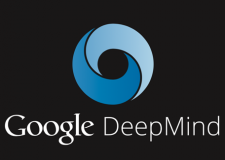Google's DeepMind shouldn't suck up our NHS records in secret
By Randeep Ramesh,
The Guardian [US]
| 05. 04. 2016
Untitled Document
When it was revealed that Google’s London-based company DeepMind would be able to access the NHS records of 1.6 million patients who use three London hospitals run by the Royal Free NHS trust – Barnet, Chase Farm and the Royal Free – it rang alarm bells.
Not just because the British fiercely guard their intimate medical histories. Not just because Google, a sprawling octopus of a company with tentacles in all our lives, wishes to “organise the world’s information”. Not just because patients are unlikely to have consented to Google having this information.
The issue for many is the intertwining of these concerns with the idea of artificial intelligence (AI). DeepMind is no ordinary company. It specialises in AI, developing technology to exhibit something like intelligent reasoning.
Last year its engineers produced a research paper showing it had created a program that could replicate the work of a “professional human video games tester”. In March, Google’s DeepMind made history by creating a program that mastered the 3,000-year-old Chinese board game Go, thought to be beyond current technology because...
Related Articles
By Josie Ensor, The Times | 12.09.2025
A fertility start-up that promises to screen embryos to give would-be parents their “best baby” has come under fire for a “misuse of science”.
Nucleus Genomics describes its mission as “IVF for genetic optimisation”, offering advanced embryo testing that allows...
By Hannah Devlin, The Guardian | 12.06.2025
Couples undergoing IVF in the UK are exploiting an apparent legal loophole to rank their embryos based on genetic predictions of IQ, height and health, the Guardian has learned.
The controversial screening technique, which scores embryos based on their DNA...
By Frankie Fattorini, Pharmaceutical Technology | 12.02.2025
Próspera, a charter city on Roatán island in Honduras, hosts two biotechs working to combat ageing through gene therapy, as the organisation behind the city advertises its “flexible” regulatory jurisdiction to attract more developers.
In 2021, Minicircle set up a...
By Vardit Ravitsky, The Hastings Center | 12.04.2025
Embryo testing is advancing fast—but how far is too far? How and where do we draw the line between preventing disease and selecting for “desirable” traits? What are the ethical implications for parents, children, clinicians, and society at large? These...




